Security and sustainability are no longer separate concerns in packaging—they go hand in hand. Consumers are demanding sustainable options for everything they use, making it essential for businesses to adopt environmentally conscious, tamper-evident packaging solutions to enhance the security of their products.
From biodegradable tamper-evident labels to recyclable security bags, sustainable packaging is reshaping the market. These packaging solutions not only deter tampering but also support long-term environmental goals. This guide will highlight the top options available for businesses looking to transition toward greener, safer packaging!
What is Environmentally Conscious Tamper-Evident Packaging

The environmentally conscious tamper-evident packaging is designed to show clear signs of tampering, ensuring the safety and integrity of various products — while keeping the environment greener. It is commonly used in industries such as food, pharmaceuticals, and electronics, where security is a must-have to protect customers from contaminated or counterfeit goods.
The key features of eco-friendly tamper-evident packaging include:
- Recyclable materials: Packaging made from paper-based security seals, recyclable plastics, and metal-free shrink film.
- Biodegradable options: Tamper-evident bags and labels made from compostable films and natural fibers that fully decompose, leaving behind no harmful microplastics or persistent pollutants.
- Reduced plastic content: Minimizing plastic waste by using thinner yet durable materials.
- Sustainable manufacturing: Packaging produced with low-energy, eco-conscious processes to reduce carbon footprint.
Many businesses are now choosing eco-friendly tamper-evident labels, tapes, and resealable pouches to align with consumer demand for sustainability. By integrating sustainability and security, businesses can protect their products while contributing to a greener future.
Benefits of Eco-Friendly Tamper-Evident Packaging
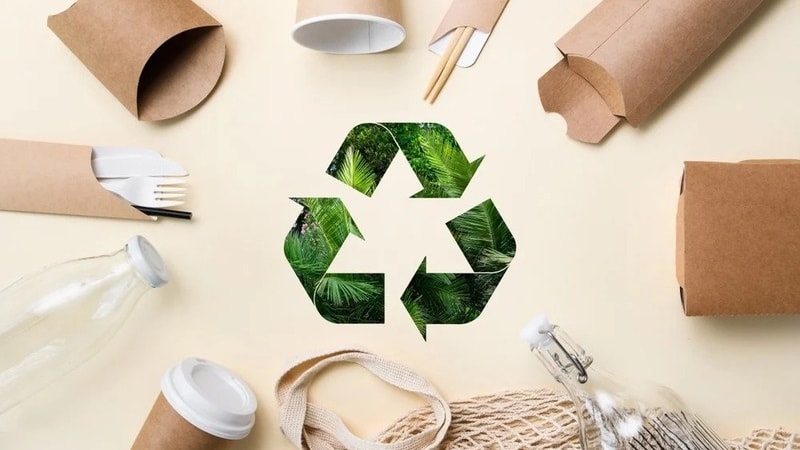
Adopting environmentally conscious tamper-evident packaging brings multiple advantages. One of the main benefits is waste reduction. Traditional tamper-evident packaging contributes to excessive plastic waste, while eco-friendly alternatives focus on using recycled and biodegradable materials. This shift helps businesses minimize environmental impact while maintaining product security.
Another significant advantage is improved brand reputation and customer loyalty. Today’s consumers prefer sustainable products, and companies that invest in eco-conscious packaging gain a competitive edge. A well-designed tamper-evident label, tape, or seal reassures customers that the product is both secure and environmentally responsible.
Additionally, eco-friendly tamper-evident packaging helps businesses comply with sustainability regulations and industry guidelines. Many governments and organizations encourage the use of recyclable packaging materials to minimize waste. By choosing tamper-evident packaging made from sustainable materials, companies ensure compliance while maintaining product integrity.
Types of Environmentally Friendly Tamper-Evident Packaging
Tamper-Evident Labels
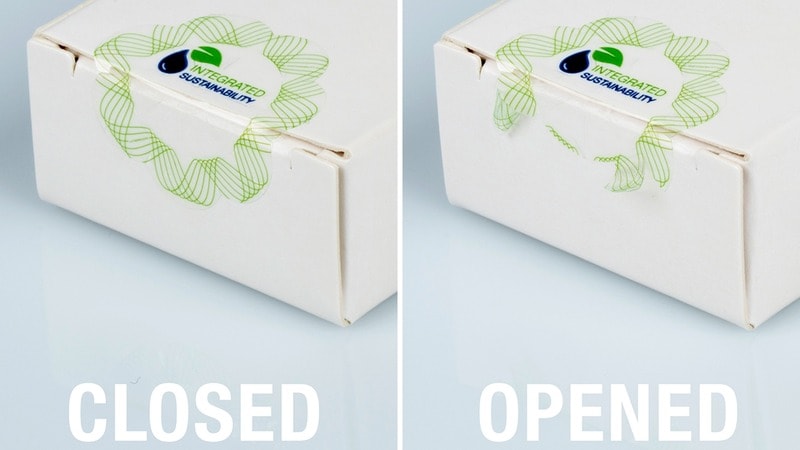
Tamper-evident labels are a crucial component of tamper-proof packaging, providing both security and sustainability. Traditional plastic labels are being replaced with bio-based materials, which break down naturally and reduce waste. These labels ensure extra security by leaving a visible mark if removed or tampered with.
The uses of tamper-evident labels include:
- Used in food packaging to maintain freshness and prevent contamination.
- Applied to containers and jars for added protection.
- Utilized in pharmaceuticals to ensure security and prevent counterfeiting.
- Integrated with shrink film or lidding film to enhance product safety.
With customization options available in different sizes and shapes, these labels fit various stand-alone packaging types. Many companies now rely on eco-friendly tamper-evident labels as a vital consideration for maintaining shelf appeal while ensuring tampering is easily detectable.
Tamper-Evident Tapes
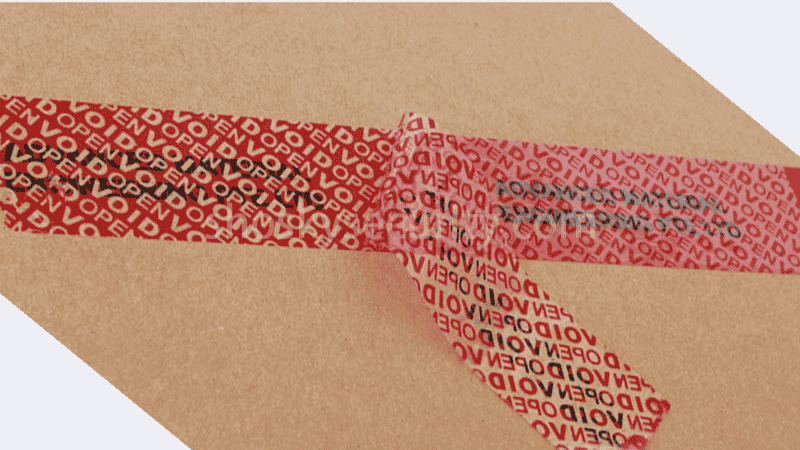
Tamper-evident tapes, or security tapes made from sustainable materials, offer a reliable solution for tamper-proof packaging while reducing plastic waste. Unlike traditional plastic tapes, these options use bio-based materials like paper or compostable plastic. They are designed to provide protection by revealing tampering through a tear or color change, making unauthorized access immediately visible.
The uses of tamper-evident tapes include:
- Applied to shipping boxes and containers for extra security.
- Common in the food industry to maintain freshness and product integrity.
- Utilized on-shelf displays to indicate sealed and safe products.
- Works well with automated machine packaging systems.
Available in different sizes and shapes, these tapes ensure that products remain intact until they reach consumers. This eco-conscious approach enhances both product security and environmental responsibility.
Tamper-Evident Bags and Seals
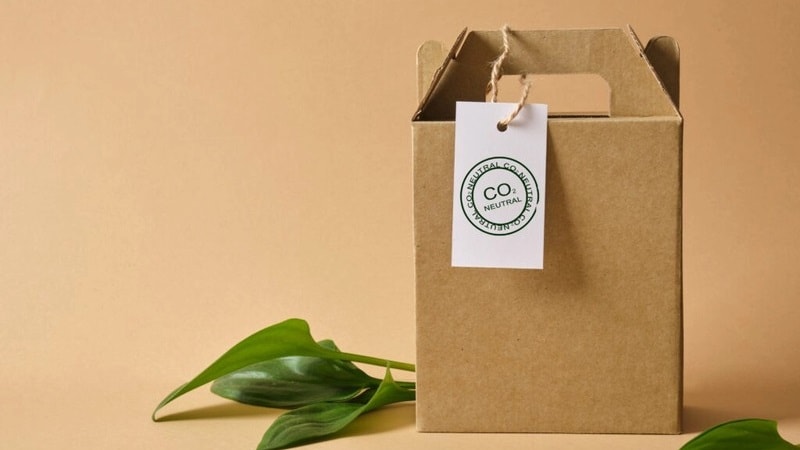
Tamper-evident bags and seals are essential for tamper-proof packaging. Many of these bags are now made from recyclable or bio-based materials, offering a sustainable alternative to traditional plastic bags. They provide protection by featuring visible tamper indicators, such as color changes or tear marks, ensuring any unauthorized entry is immediately noticeable.
The uses of tamper-evident bags and seals include:
- Used in food packaging to maintain freshness and prevent contamination.
- Common in retail for securing containers, jars, and various products.
- Essential for banking and cash transportation to ensure security.
- Frequently used in forensic and law enforcement settings for extra security.
- Ideal for pharmaceuticals to prevent unauthorized access.
With options available in different sizes, these bags and seals cater to various industries. The use of lidding film, shrink bands, and shrink film adds an extra layer of protection, ensuring that contents remain secure. As businesses prioritize sustainability, eco-friendly tamper-evident bags and seals have become a vital consideration in responsible packaging solutions.
How to Choose the Right Tamper-Evident Packaging Solution
Selecting the best tamper-evident packaging requires understanding the different types of tamper-evident packaging materials available and assessing which options fit your needs. The following table provides a clear, structured way for businesses to assess their needs and select the most suitable tamper-evident packaging.
| Factor | Considerations | Recommended Solution |
|---|---|---|
| Product Type | Is the product fragile, perishable, or high-value? | Tamper-evident bags, seals, or rigid containers |
| Level of Security | Does the product need visible tamper indicators? | VOID labels, destructible labels, or holographic seals |
| Tampering Risk | Is the product at high risk of counterfeiting or theft? | Security tapes, shrink bands, or RFID-enabled labels |
| Regulatory Compliance | Are there industry regulations for tamper-evidence? | Certified security seals and bags for legal compliance |
| Sustainability Goals | Is eco-friendliness a priority? | Recyclable, bio-based, or reusable packaging |
| Customization Needs | Do you need branding or specific messaging? | Custom security labels, printed tapes, or unique seals |
| User Convenience | Should the packaging be easy to open for customers? | Tear strips, resealable tamper-proof pouches |
A balance between sustainability, security, and functionality is essential as well. Choosing packaging made from recyclable materials or bio-based materials helps reduce environmental impact while ensuring tamper evidence. Businesses should work with a trusted supplier to ensure that their packaging solutions align with both security and sustainability standards.
How to Implement Tamper-Evident Solutions in Your Business

To integrate tamper-evident packaging, businesses must first assess their packaging needs. Reviewing current containers, lids, and seals can help determine where improvements are needed. Transitioning to sustainable tamper-evident packaging may require adopting shrink film, shrink bands, or lidding film to enhance protection and freshness while maintaining security.
Collaboration with suppliers is crucial in ensuring that the chosen materials meet both security and environmental standards. Businesses should request different sizes and shapes to fit their products while verifying that materials such as recyclable or bio-based materials are used. Ensuring extra security features like visible tamper indicators helps maintain consumer trust.
Educating employees about the importance of tamper-proof packaging and sustainability is key to successful implementation. Training teams on how to handle tamper-evident materials, use tools like sealing machines, and properly dispose of recyclable packaging ensures a smooth transition. By prioritizing security and sustainability, businesses can enhance product safety and contribute to an eco-friendly future.
Case Studies: Companies Leading the Way with Sustainable Tamper-Evident Packaging
As businesses prioritize sustainability, many have turned to eco-friendly tamper-evident packaging to enhance security, reduce waste, and meet consumer demand for environmentally responsible solutions. Below are three companies successfully implementing tamper-proof packaging while maintaining freshness, protection, and sustainability.
Nestlé: Reducing Plastic Waste with Recyclable Packaging
Nestlé has made significant progress in reducing its environmental impact by incorporating sustainable tamper-evident packaging. The company has focused on recyclable designs, reducing its overall packaging waste while ensuring security for its products.
Here is how it helped them:
- Reduced plastic waste: In 2023, Nestlé cut its packaging waste by 10 billion pieces compared to 2022 and by 24 billion pieces since 2021.
- Lower virgin plastic usage: The company reduced its virgin plastic consumption by 14.9% from its 2018 baseline and aims for a 33% reduction by 2025.
- Improved recyclability: By the end of 2023, 83.5% of Nestlé’s packaging was designed for recycling.
- Compostable solutions: Nestlé has invested in compostable packaging, ensuring that waste is biodegradable when properly processed.
Unilever: Commitment to Sustainable and Secure Packaging
Unilever has also taken a proactive approach to sustainable tamper-evident packaging by integrating post-consumer recycled materials and investing in refillable solutions to minimize waste.
Here is how it helped them:
- Increased recycled content: Unilever has committed to making all of its plastic packaging recyclable, reusable, or compostable by 2025 and has already achieved 50% post-consumer recycled content in its European packaging.
- Reduced carbon footprint: By switching to eco-friendly, tamper-evident packaging, the company has significantly lowered its emissions from single-use plastics.
- Consumer trust and compliance: Enhanced security features have helped Unilever maintain product integrity while adhering to global sustainability regulations.
Coca-Cola: Tamper-Evident Packaging with Reusable Materials
Coca-Cola has focused on returnable and refillable bottle programs while ensuring secure packaging to prevent tampering and counterfeiting.
Here is how it helped them:
- Lowered packaging waste: The company has invested in tamper-evident, plant-based bottle caps and labels that improve sustainability.
- Boosted refillable packaging usage: Coca-Cola aims to have 25% of its packaging come from refillable or returnable solutions by 2030.
- Recyclability improvements: Coca-Cola has enhanced its packaging design to align with APR (Association of Plastic Recyclers) guidelines, making its products easier to recycle.
These companies show that integrating tamper-evident features with sustainable materials is not only feasible but also benefits brand reputation, regulatory compliance, and environmental conservation.
Best Practices for Using Eco-Conscious Tamper-Evident Packaging
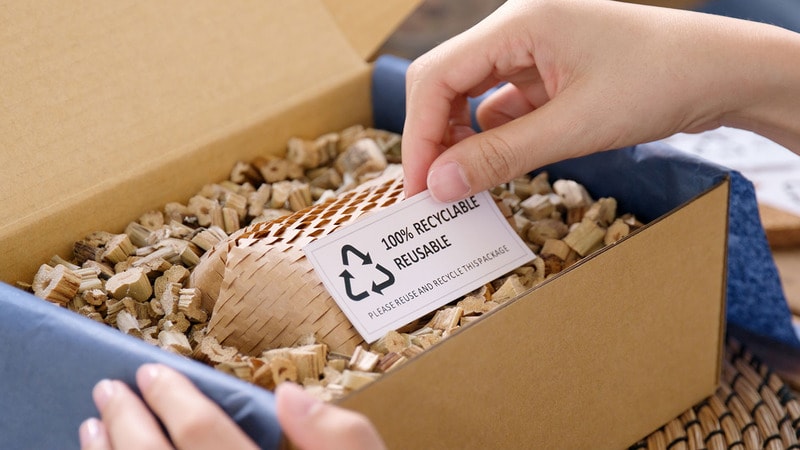
To maximize both security and sustainability, businesses should integrate eco-friendly materials like bio-based materials, recyclable shrink films, and compostable tamper-evident seals into their packaging. These options ensure products remain protected while reducing environmental impact.
Balancing cost and sustainability is crucial when selecting materials. While some tamper-proof packaging options, such as recycled plastic containers and paper-based security tapes, may have a higher upfront cost, they can reduce long-term expenses by minimizing waste and improving recyclability. Companies should consider the lifespan, durability, and recyclability of materials to make cost-effective choices.
Educating consumers about environmentally conscious tamper-evident packaging is essential for driving adoption. Brands should use clear labeling, transparent packaging, and visible security features to show customers that the packaging is both secure and sustainable. Providing information on how to properly dispose of or recycle packaging materials can further enhance consumer engagement and trust.
FAQs
What materials are used in eco-friendly tamper-evident packaging?
Eco-friendly tamper-evident packaging is made from recyclable plastics, biodegradable films, compostable paper, and bio-based materials like cornstarch or PLA.
Is tamper-evident packaging still effective if it’s made from sustainable materials?
Yes, sustainable materials can provide strong tamper-evidence while being environmentally friendly.
Are environmentally conscious tamper-evident packaging expensive?
Costs vary based on materials, but eco-friendly options are typically 10-30% more expensive. However, bulk purchasing and improved brand perception can offset costs over time.
Conclusion
Switching to sustainable tamper-evident packaging is a smart choice for businesses that value both security and environmental responsibility. With options like recyclable seals, biodegradable labels, and low-impact manufacturing, companies can meet consumer demand for sustainability. So, now is the time to make the switch to sustainable, tamper-evident packaging and lead the way in responsible packaging solutions!
Advance Sustainable Tamper-Evident Solutions
With a focus on innovation, Shosky Security offers eco-friendly tamper-evident labels, tapes, and bags made from recyclable and biodegradable materials. These solutions ensure product integrity while reducing environmental impact. Contact us today and explore our customized tamper-evident packaging solutions for a sustainable tomorrow!


